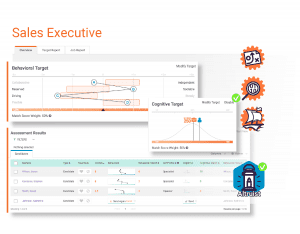A Brief History of Predictive Analytics
By Thomas MacIntosh |
3.9 min read
A Brief History of Predictive Analytics
Moore’s law dictates that technology becomes two times faster, and half as expensive, every two years. This hypothesis has been substantiated by the rapid expansion in the realm of computer-processing abilities. A bi-product of this advancement was predictive analytics models such as regression and machine learning techniques. These predictive models changed our ability to process and accurately utilize large quantities of data.
Thus, it can be presumed that models such as the ones above must have come around a few years after the creation of the first computer in the late 1930s, when the smart people who designed the computer realized what it was capable of, right?
Well, although these advanced techniques are only about sixty years old, the concept of humans analyzing the past to predict future characteristics actually dates to the 17th century, which begins the first of five phases of predictive analytics.
Phase 1: Basic Analytics – The Lloyd Company
In 1689, predictive analytics was used by the Lloyd company to underwrite insurance for sea voyages. Using data, the company would accept the risk of sea voyages in return for a premium. Lloyd used data sets of past trips in order to evaluate the risk of these voyages and predict patterns of liability. Lloyds continues to use predictive models in all facets of their insurance underwriting, and the idea has become general-practice in the insurance industry.
Phase 2: Descriptive Phase – What Happened?
Fast-forward to the mid 20th century, just after the invention of the computer. The Description Phase linked the Lloyd Company idea of “what happened,” with the modern computer, to create the basic models of linear programming and computational modeling. These models have become the driver of several business functions in almost every industry in the world.
It was also during this time that Predictive Index™ founder, Arnold Daniels, fought in World War Two. His battalion would finish the war with zero combat casualties, a phenomenon his commanders wanted to study. They sent a psychologist to study the unit, providing Daniels with his first exposure to psychometric testing. After returning home to Boston and temporarily studying at Harvard University, Daniels created the first Predictive Index™, then called PI Worldwide, to utilize predictive analytics in the workplace. Since, the Predictive Index Behavioral Assessment™, offered by the Predictive Success Corporation, has been the subject of almost 500 validation studies.
Phase 3: The Diagnostic Phase – Why Did it Happen?
Into the mid 1970s, predictive analysis evolved to encompass the question of why something happened, instead of just what happened. This analysis looked for root-causes and was the backbone of several innovations that would improve business functions, including optimization and maximization. It was also during this period that the computers made large jumps in storage and processing capabilities, allowing functions to become that much more effective.

Diagnosis abilities greatly enhanced the computer’s ability to carry out predictive models.
Phase 4: The Predictive Phase – What Will Happen?
The late 20th century and dawn of the 21st century saw the beginning of the predictive phase. The development of mathematical models that utilized weighting techniques to score data sets were programmed into analytical programs. This allowed the computer to make suggestions and predict outcomes based on a series of inputs. Today, this technique can be seen in the Predictive Index, as applicants behavioral and cognitive scores are weighted and ranked in accordance with the requirements of a position. These ranking abilities allow computers to provide managers with data-driven answers to business problems.

The Predictive Index System™, offered by the Predictive Success Corporation, uses predictive analysis to rank candidates against positions.
Phase 5: The Cognitive Phase – Machine Learning and the Future
With continually increasing processing speeds, and innovations in programming, machine learning and artificial intelligence have created a climate that can allow computers to increase accuracy levels in predictive software without human intervention. The Predictive Index™ utilizes machine learning to analyze job titles and provide users with accurate position characteristics based on samples from other real-world positions. These machine learning systems allow the Predictive Index to continually improve and better respond to changes in the marketplace.
Summary
Predictive analytics has evolved greatly since the days of Arnold Daniels and the Lloyd Insurance Company, but the drive remains the same; to utilize data and patterns to decrease description cost, increase accuracy, and provide managers with the tools to make the right decision the first time.
Are you interested in how your company can leverage predictive analytics to hire better, increase revenue, and support decision makers? Click here, for more information.
Sources
www.computerhope.com/issues/ch000984.htm
www.afterinc.com/brief-history-predictive-analytics-part-1/
Related Blogs
Employee Retention Programs: Keeping Your Best Talent Happy
Employee retention is a cornerstone of business success. High turnover rates can be detrimental, leading to increased recruitment costs, loss of organizational knowledge, and decreased morale. At Predictive Success, we understand that retaining top talent
Are You Equipped with the Right Salesperson?
Introduction: In today's competitive market, many variables are beyond your control. However, one crucial factor you can manage is assembling the right sales team to drive your business forward. Having the optimal sales team is
Mastering Pre-Employment Testing to Find the Perfect Fit
Hiring the right talent is critical to the success of any organization. A single mis-hire can result in significant costs, including wasted time, lost productivity, and the expense of rehiring and retraining. Pre-employment testing has


